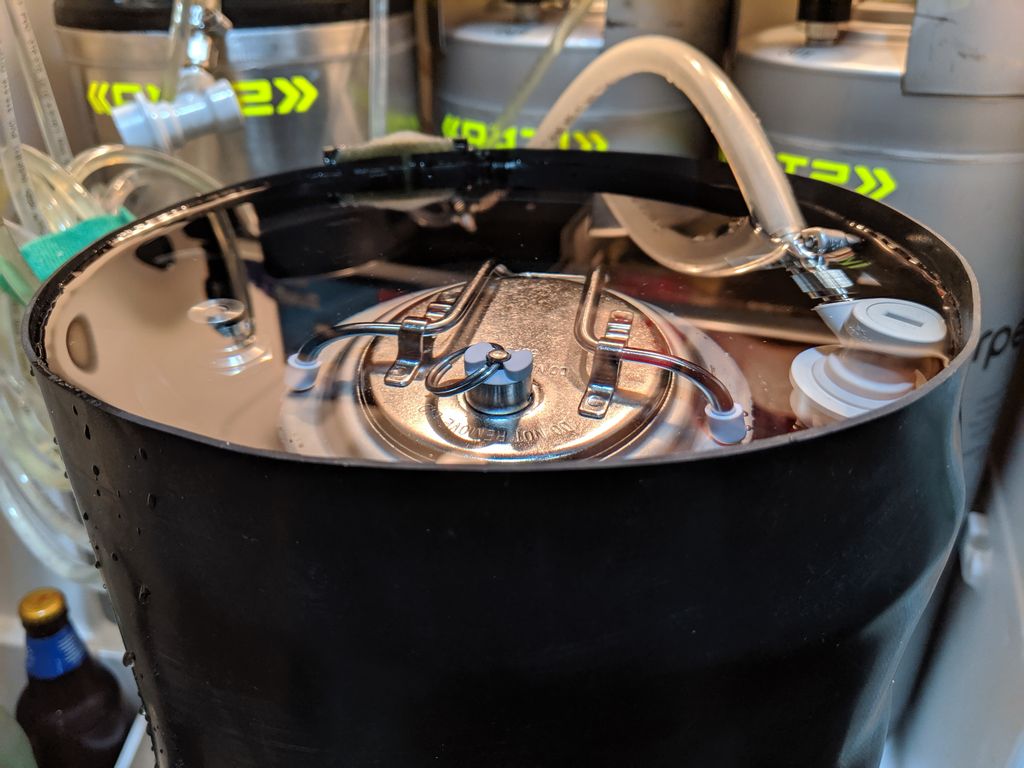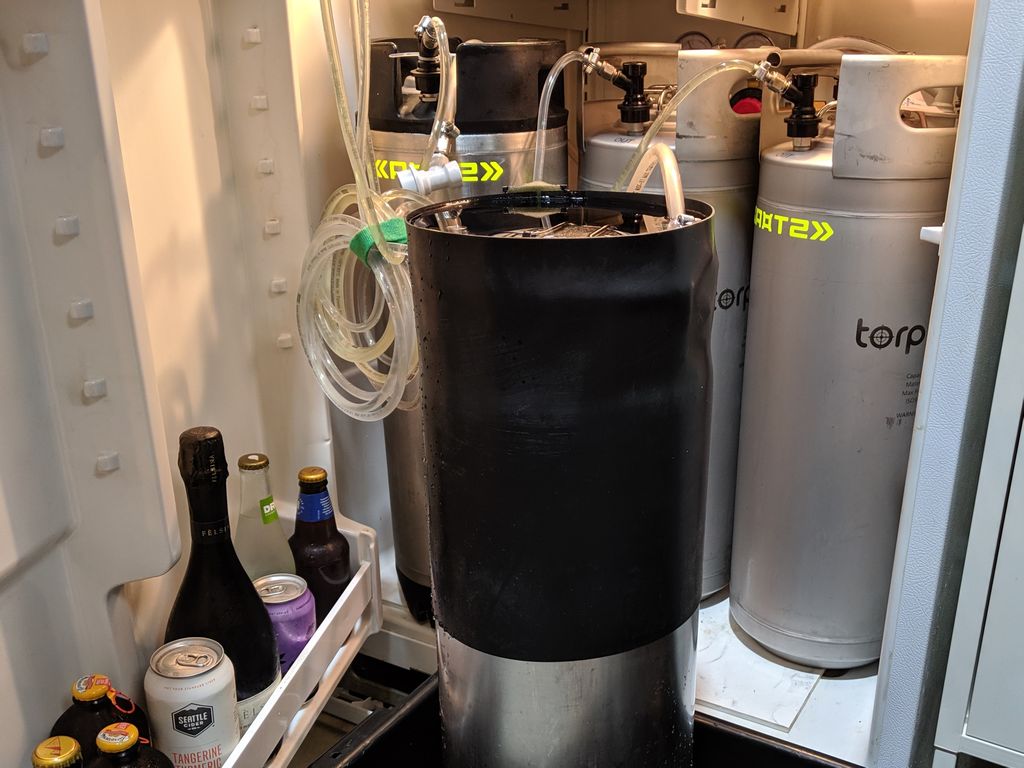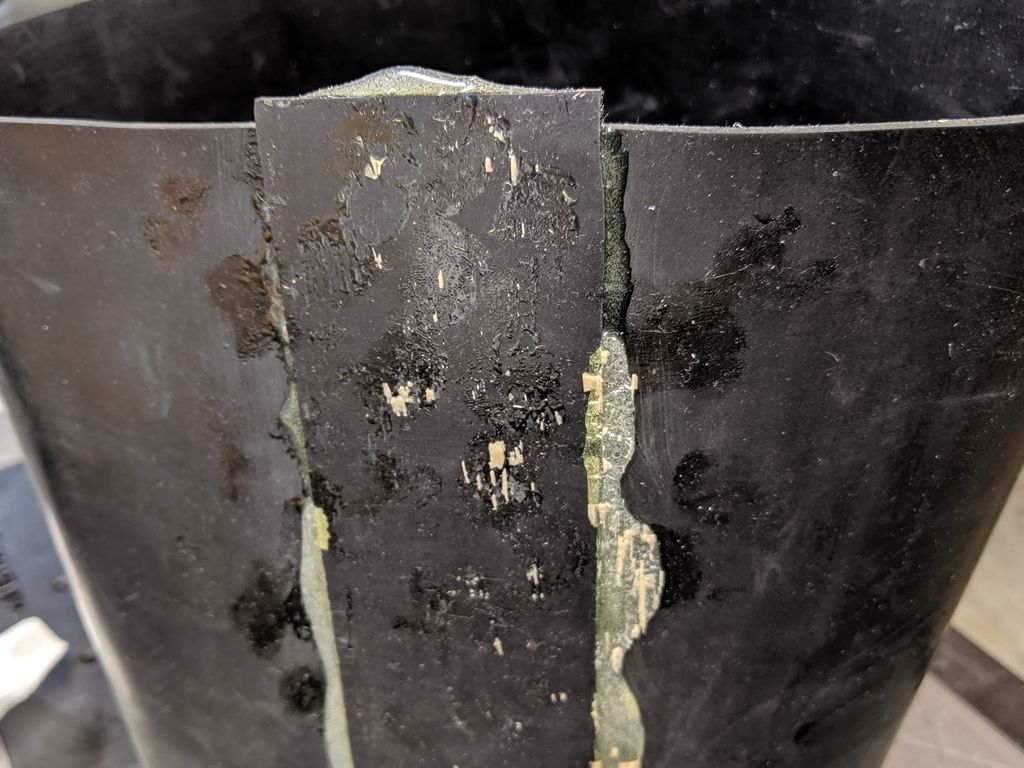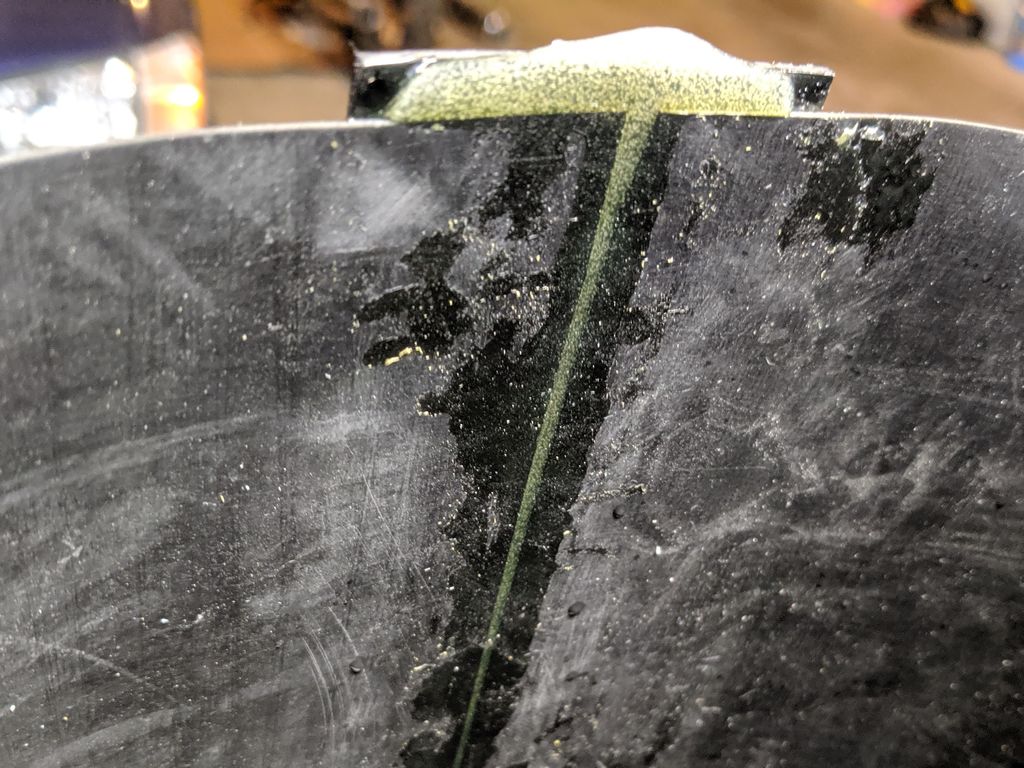I recently lost a couple of CO2 fills to a leak that I still haven't figured out. All I know for sure is that the leak is downstream of the regulator, but I am worried that it might be one of those uncommon situations where the leak manifests when there's tension on the gas line, or is from an incompatibility between the QD and a specific post. And I didn't take good notes so I am not even sure which keg it might be.
Sometimes it is hard for me to see a small or inconsistent leak when spraying with soapy water or StarSan. I always wished it was easier to submerge a filled keg, because a gas leak under water is really easy to spot. But how do you submerge a keg and all the fittings?
So, I made a collar out of 1/16" latex rubber. Slide it over the top of the keg and fill it with water--now there is a lake on top of your keg, and you can see immediately if there is a gas leak when you hook stuff up and play around. (I set the keg in a plastic tub to catch the inevitable water spills. The collar doesn't leak, but you'll have to drain it eventually.)

The Mk 1 Top Hat is definitely taller than it needs to be. Now that I've verified it works I will cut 6" or so off so that it is easier to place and remove. What you see is just how the rubber sheet came. You only need a few inches of rubber on the metal.

Making the top hat was pretty easy. I just turned a sheet of neoprene rubber into a cylinder with some rubber adhesive.
I found the cheapest 1/16" rubber sheet I could find that was long enough to wrap around a 26.5" corny keg, plus a few inches. Amazon has a perfect 36" x 12" piece for $12. After some more research I picked Aquaseal FD for the adhesive. (It comes in smaller tubes and if I was doing this again, I would have tried to make it work with the cheaper 0.75 oz size.)
To turn the sheet into a cylinder, I had to cut the sheet to be somewhat less than the keg's diameter. It had to fit tight enough to be water-tight, but not so tight it was hard to get on. After some tests I guessed that a cylinder diameter of 25.75" would work, and it seems just right.
To glue it up, I cut a strip of rubber about 2" wide to act as an exterior patch. The inside of the collar needed to be smooth to keep it water-tight, so I couldn't overlap the ends.
The outside join is ugly, because the glue is messy, and it picked up debris when I clamped it. But you get the idea.

The inside join is nice and smooth. When I clamped it together, I used a Teflon sheet underneath so that the glue would dry flat, and hopefully peel free. It worked perfectly. You can see the rubber isn't joined flush, but it's OK. The adhesive is gap-filling and stretchy. After sitting clamped for about 24 hours, it was all ready.

The finished cylinder seems very durable and there's no indication the Aquaseal FD will give way. This tool may not be needed often, but sometimes it will be just what I need.
I still have to check more kegs and find that leak, but the important thing is I verified one I want to use right now isn't going to be a problem!
Sometimes it is hard for me to see a small or inconsistent leak when spraying with soapy water or StarSan. I always wished it was easier to submerge a filled keg, because a gas leak under water is really easy to spot. But how do you submerge a keg and all the fittings?
So, I made a collar out of 1/16" latex rubber. Slide it over the top of the keg and fill it with water--now there is a lake on top of your keg, and you can see immediately if there is a gas leak when you hook stuff up and play around. (I set the keg in a plastic tub to catch the inevitable water spills. The collar doesn't leak, but you'll have to drain it eventually.)

The Mk 1 Top Hat is definitely taller than it needs to be. Now that I've verified it works I will cut 6" or so off so that it is easier to place and remove. What you see is just how the rubber sheet came. You only need a few inches of rubber on the metal.

Making the top hat was pretty easy. I just turned a sheet of neoprene rubber into a cylinder with some rubber adhesive.
I found the cheapest 1/16" rubber sheet I could find that was long enough to wrap around a 26.5" corny keg, plus a few inches. Amazon has a perfect 36" x 12" piece for $12. After some more research I picked Aquaseal FD for the adhesive. (It comes in smaller tubes and if I was doing this again, I would have tried to make it work with the cheaper 0.75 oz size.)
To turn the sheet into a cylinder, I had to cut the sheet to be somewhat less than the keg's diameter. It had to fit tight enough to be water-tight, but not so tight it was hard to get on. After some tests I guessed that a cylinder diameter of 25.75" would work, and it seems just right.
To glue it up, I cut a strip of rubber about 2" wide to act as an exterior patch. The inside of the collar needed to be smooth to keep it water-tight, so I couldn't overlap the ends.
The outside join is ugly, because the glue is messy, and it picked up debris when I clamped it. But you get the idea.

The inside join is nice and smooth. When I clamped it together, I used a Teflon sheet underneath so that the glue would dry flat, and hopefully peel free. It worked perfectly. You can see the rubber isn't joined flush, but it's OK. The adhesive is gap-filling and stretchy. After sitting clamped for about 24 hours, it was all ready.

The finished cylinder seems very durable and there's no indication the Aquaseal FD will give way. This tool may not be needed often, but sometimes it will be just what I need.
I still have to check more kegs and find that leak, but the important thing is I verified one I want to use right now isn't going to be a problem!




